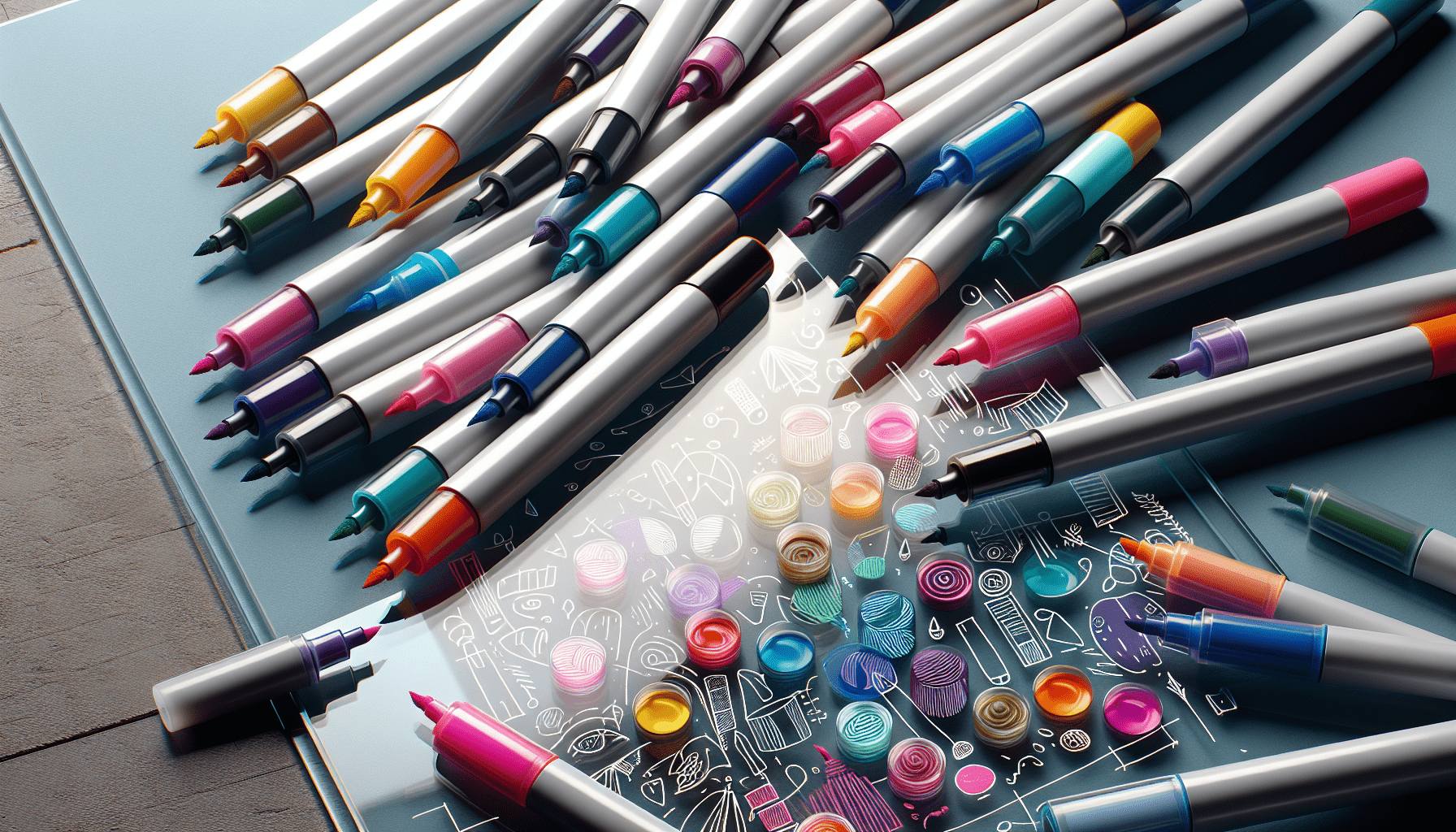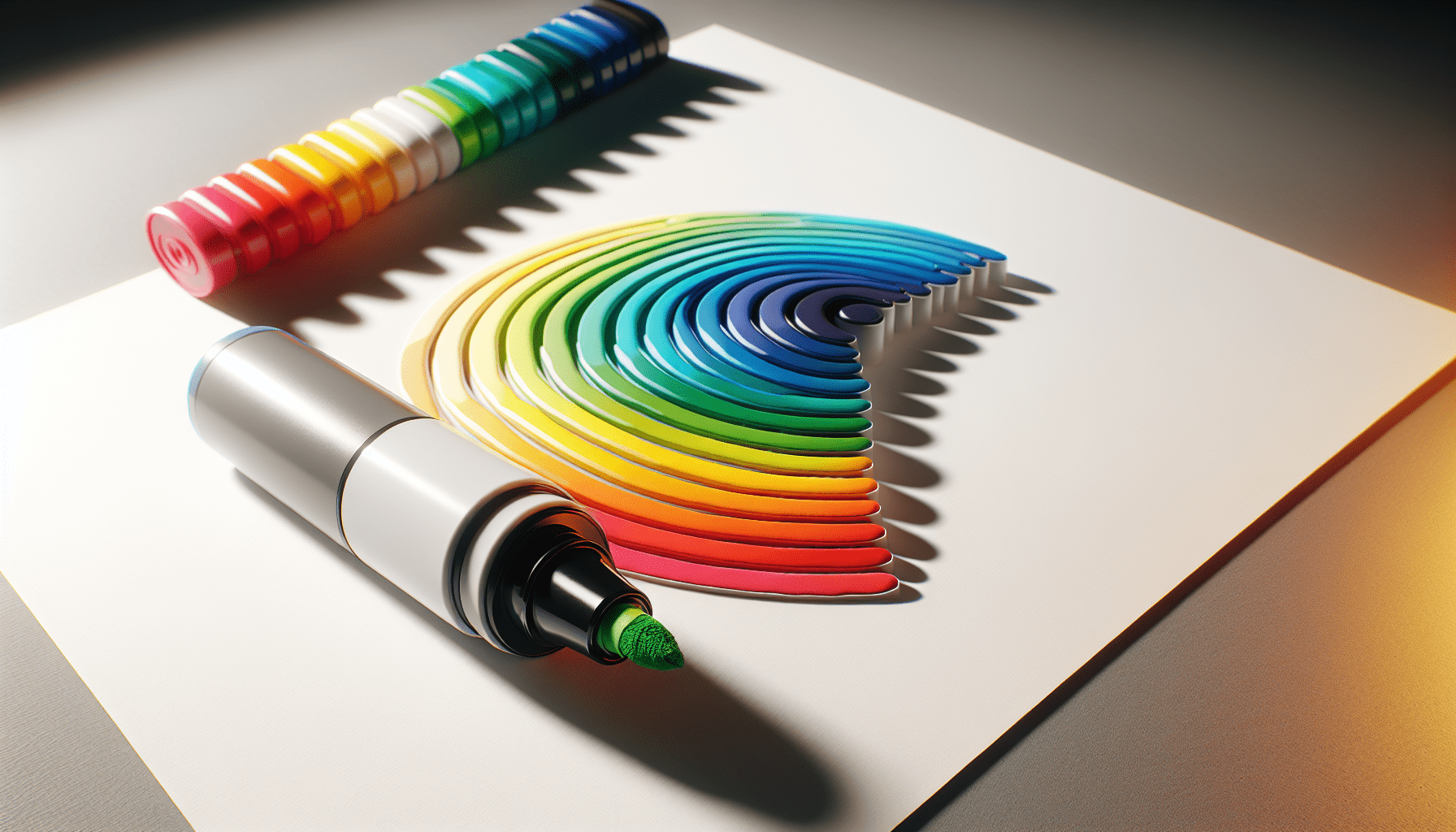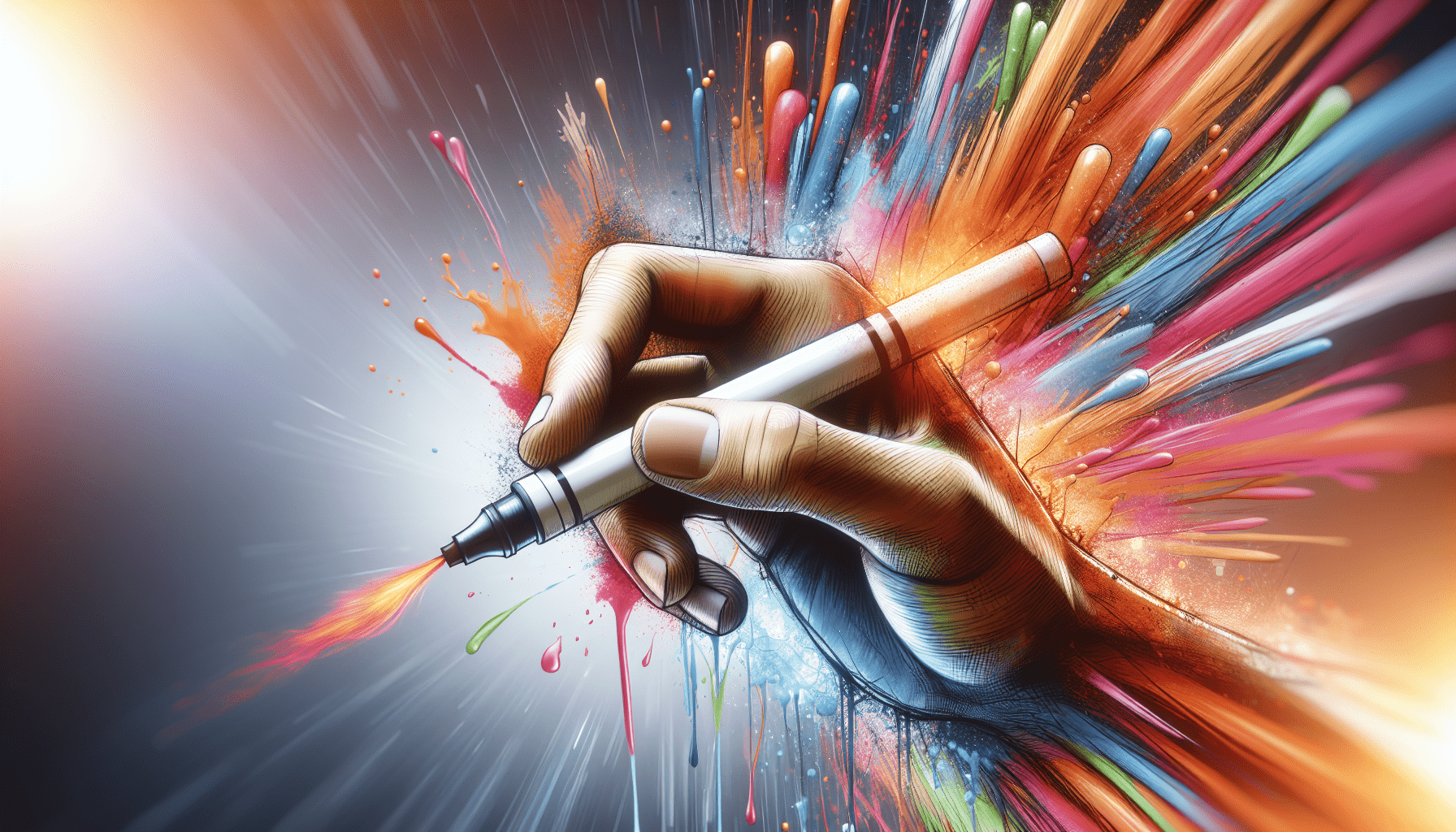Have you ever wondered which markers are the best to use for glass painting? Glass painting can be an incredibly rewarding hobby or professional pursuit, but it requires the right tools to achieve optimal results. Different markers offer unique features, and knowing which ones to select can make a significant difference in your work. This article aims to guide you through the various markers suitable for glass painting, their features, and how to use them effectively.
Understanding Glass Painting
Glass painting is a form of art that involves applying paint, ink, or other coloring agents directly to glass surfaces. You can create a variety of effects, ranging from translucent stained-glass looks to vibrant, opaque colors. The choice of markers can affect not only the durability of your artwork but also its aesthetic quality.
Types of Glass
Before choosing markers, it’s important to understand the different types of glass you might work with:
| Type of Glass | Description |
|---|---|
| Clear Glass | The most common type. Standard window glass is clear and smooth. |
| Frosted Glass | Has an opaque, textured surface. Often used for privacy. |
| Stained Glass | Colored or stained. Usually used for decorative purposes. |
| Tempered Glass | Heat-treated for added strength. Often used in doors and windows. |
| Borosilicate Glass | Heat-resistant and used in laboratory settings or cooking applications. |
Understanding the properties of different types of glass will help you select markers that adhere well and suit your artistic needs.
Types of Markers for Glass Painting
There are several types of markers that can be used for glass painting, each with its own set of features and applications:
Acrylic Markers
Acrylic markers are popular for their versatility and ease of use. They contain acrylic paint in a marker format, providing you with precise control over your designs.
Features of Acrylic Markers:
- Permanent: They offer long-lasting results.
- Water-Resistant: Ideal for glass surfaces exposed to moisture.
- Quick-Drying: Reduces the risk of smudging.
Oil-Based Markers
Oil-based markers are another excellent option for glass painting. They contain oil-based paint, which adheres well to non-porous surfaces like glass.
Features of Oil-Based Markers:
- Durable Finish: Offers excellent longevity.
- Waterproof: Extremely resistant to moisture and smudging.
- Opaque Colors: Produces vibrant and opaque colors, suitable for high-impact designs.
Solvent-Based Markers
Solvent-based markers contain a solvent medium that makes the ink adhere firmly to glass surfaces. These markers are ideal for outdoor projects due to their resilience.
Features of Solvent-Based Markers:
- Highly Durable: Resists fading and wear over time.
- Weather-Resistant: Perfect for outdoor glass surfaces.
- Bright Colors: Offers vivid pigmentation.
Paint Markers
Paint markers often use pigmented paint and come in a variety of formulations, including water-based, oil-based, and acrylic.
Features of Paint Markers:
- Versatility: Can be found in different formulations to suit various needs.
- Ease of Use: Simple to apply and control, making them beginner-friendly.
- Variety of Colors: Available in an extensive range of colors.
Chalk Markers
Chalk markers can also be used on glass, especially for temporary designs such as storefront displays or home decor.
Features of Chalk Markers:
- Erasable: Easily wiped off with a damp cloth, making them perfect for temporary artwork.
- Vibrant Colors: Offers bright and striking colors that stand out.
- Non-Toxic: Safe for use in households and around children.
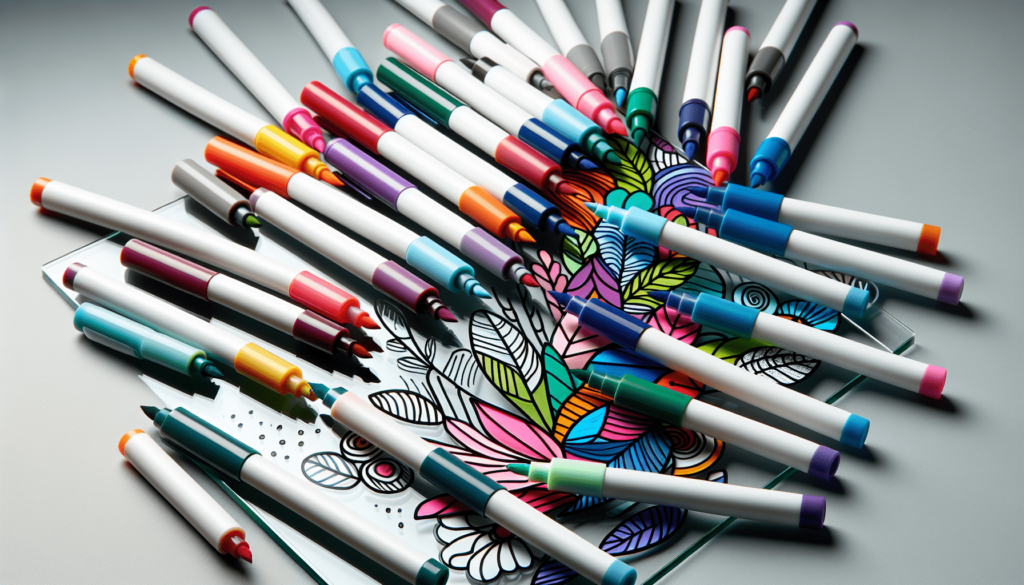
Selecting the Right Markers
To choose the best markers for your glass painting project, consider the following factors:
Project Type
The nature of your project often dictates which markers are most suitable. If you need long-lasting artwork that can withstand environmental elements, oil-based or solvent-based markers are ideal. For temporary projects, such as window decorations, chalk markers might be your best bet.
Surface Preparation
Proper surface preparation is crucial for the adhesion of the markers:
- Clean the Surface: Use a glass cleaner or a mixture of water and vinegar to remove any dust, grease, or fingerprints.
- Dry Completely: Ensure the glass is completely dry before applying any markers.
- Test a Small Area: Before diving into your project, test the marker on a small, inconspicuous area to ensure it adheres well and achieves the desired effect.
Application Tips
Using markers for glass requires some technique to achieve professional results. Here are some tips to keep in mind:
Layering: Apply paint in thin layers to build up color and opacity gradually.
Pressure Control: Adjust the pressure to achieve different line thicknesses. Light pressure results in thinner lines, while more pressure can create bolder strokes.
Drying Time: Allow each layer to dry completely before adding another to prevent smudging and uneven coverage.
Sealing: Once your design is complete, consider sealing it with a clear acrylic sealant to enhance durability and protect it from moisture and fading.
Top Recommended Brands
Several brands are known for their high-quality glass painting markers. Here are some top recommendations:
Posca
Posca markers are favored among artists for their versatility and vibrant colors. These markers are water-based and provide excellent coverage on glass surfaces.
Features:
- Water-Based: Provides durable, water-resistant results.
- Opaque Colors: Vivid and opaque, suitable for detailed designs.
- Non-Toxic: Safe for use in various settings, including schools and homes.
Sharpie
Sharpie offers oil-based paint markers that are highly popular for glass painting. Known for their durability and range of colors, Sharpie markers are a great choice for various projects.
Features:
- Oil-Based: Ensures long-lasting and waterproof results.
- Variety of Colors: Extensive color range for diverse designs.
- Durable: Resists fading and smudging over time.
Uni-Paint
Uni-Paint markers are solvent-based and provide excellent adhesion to glass surfaces. They are particularly useful for projects requiring high durability.
Features:
- Solvent-Based: Offers strong adhesion and longevity.
- Bright Colors: Provides vibrant and intense colors.
- Weather-Resistant: Ideal for outdoor use.
Sakura Pen-Touch
Sakura’s Pen-Touch markers are metallic and suited for decorative glass painting. These markers are easy to use and offer a unique metallic finish.
Features:
- Metallic Finish: Adds an elegant and shimmering effect to designs.
- Opaque Colors: Strong pigmentation for eye-catching results.
- Easy Application: Simple to use, suitable for artists of all levels.
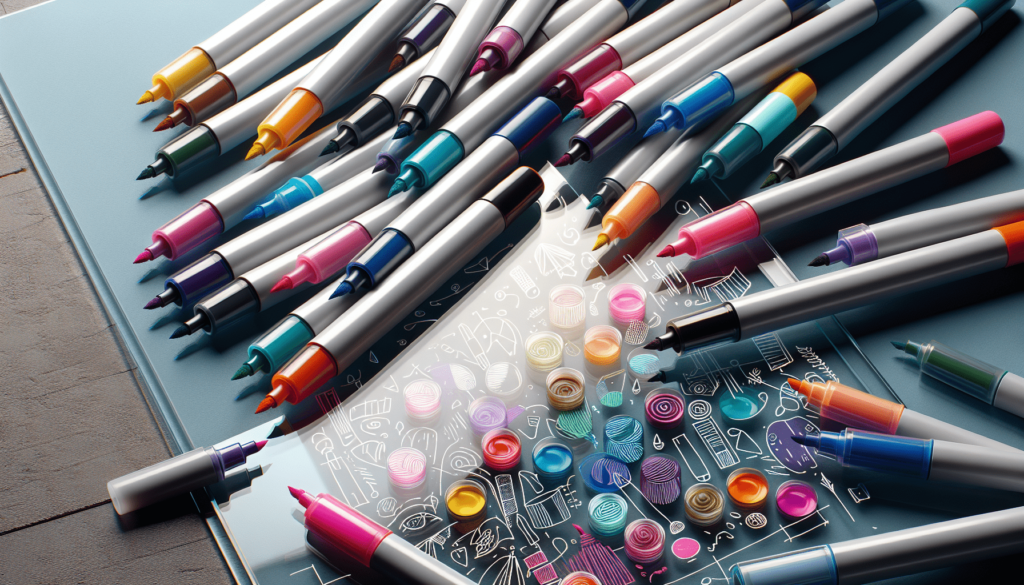
Techniques for Glass Painting
To make the most of your markers, consider employing various techniques to enhance your glass paintings.
Outlining
Outlining your design before filling it in can help achieve cleaner and more precise results. Use a fine-tip marker for this step to ensure detailed lines, and then proceed to fill in your design with broader markers.
Stippling
Stippling involves creating a pattern or shading by making small dots. This technique can add texture and depth to your designs. Use a fine-tip marker and apply the dots closely together to create detailed patterns.
Blending
Blending can create graduated colors and smooth transitions. While blending on glass can be challenging due to its smooth surface, it is achievable with certain markers like acrylic or paint markers. Quickly blend colors while they are still wet to achieve the best results.
Layering
Layering involves applying multiple coats of paint to build up the color’s intensity. It is especially useful for achieving opaque coverage. Make sure each layer is completely dry before applying the next one to avoid smudging and uneven colors.
Proper Care and Maintenance
Maintaining your markers properly will extend their lifespan and ensure consistent performance.
Storage
Store your markers horizontally to prevent them from drying out. This position helps in keeping the ink evenly distributed within the marker. Ensure that the caps are tightly closed to prevent the ink from evaporating.
Cleaning
Regularly clean the tips of your markers by wiping them with a cloth or using a special marker cleaning solution if recommended by the manufacturer. This step will prevent the buildup of dried paint and keep the marker functioning properly.
Shelf Life
Markers have a finite shelf life, so always check the expiration date before purchasing. While most markers can last for several years if stored properly, older markers may lose their effectiveness over time.
Frequently Asked Questions
Can I use regular markers for glass painting?
Regular markers are generally not suitable for glass painting as they lack the necessary adhesion and durability for non-porous surfaces. Specialized markers like acrylic, oil-based, or solvent-based markers are designed specifically for this purpose and will yield better results.
How do I remove markers from glass?
Depending on the type of marker used, removal methods will vary. For water-based markers, a damp cloth or window cleaner suffices. For oil-based or solvent-based markers, you may need to use rubbing alcohol or a specialized glass cleaner. Always test a small area first to ensure no damage to the glass surface.
Can I bake my artwork to set the markers?
Some markers may benefit from a baking process to set the ink, making it more durable. However, this is not universal for all markers. Always refer to the manufacturer’s instructions to determine if baking is appropriate for your markers.
Are these markers safe to use around children?
Many glass painting markers, particularly water-based ones like those from Posca, are non-toxic and safe for use around children. That said, always look at the safety information provided by the manufacturer and follow proper handling guidelines.
Enhancing Your Glass Painting Skills
Improving your glass painting skills requires practice and experimentation:
Practice
Start with simple designs and gradually move to more complex patterns. As you become more familiar with how different markers perform on glass, you’ll be better equipped to tackle intricate projects.
Workshops and Tutorials
Participate in workshops or online tutorials to learn new techniques and gather tips from experienced artists. Many resources are available to help you enhance your skills and expand your creative horizons.
Experiment with Different Surfaces
While glass is a primary medium, experimenting with other surfaces like acrylic, metal, or ceramic can help you understand how different markers perform and broaden your artistic capabilities.
Conclusion
Selecting the right markers for glass painting is essential for achieving professional and durable artwork. By understanding the features and benefits of acrylic, oil-based, solvent-based, and paint markers, you can choose the best tools for your specific needs. Proper preparation, application techniques, and maintenance will further enhance your results.
Whether you are a beginner or an experienced artist, the right markers and techniques can significantly elevate your glass painting projects. Experiment with different markers and approaches to find what works best for you, and don’t hesitate to explore various brands and types to perfect your craft.
